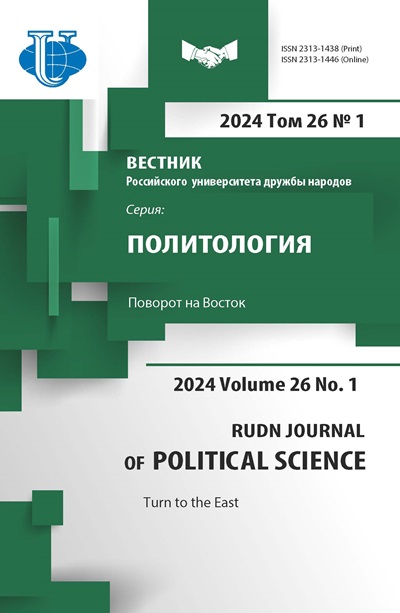Approaches to Managing Ethnoreligious Diversity: the Case of the City-State Singapore
- Authors: Lavrov I.R.1, Kharitonova O.G.1
-
Affiliations:
- Moscow State Institute of International Relations (University) MGIMO University
- Issue: Vol 22, No 4 (2020): RELIGION IN POLITICS AND POLITICS IN RELIGION
- Pages: 634-646
- Section: RELIGION, NATION, IDENTITY: POLITICAL MEANINGS IN THE MODERN WORLD
- URL: https://journals.rudn.ru/political-science/article/view/24943
- DOI: https://doi.org/10.22363/2313-1438-2020-22-4-634-646
Cite item
Full Text
Abstract
The article examines the problem of finding an appropriate power-sharing model for a divided society with cleavages along religious, linguistic, cultural and ethnic lines. Two key approaches to the institutional management of ethnoreligious diversity, consociationalism and centripetalism, are studied. The theoretical framework then applied to the city-state Singapore, a secular nation-state with a dominant ethnic group. The article states that the individual ethno-religious segments aware of their socio-political role can not be detected in the nation-state, whose citizens lack clear ethnic and religious identification, as a result of the “culturally neutral citizenship” concept application. The authors conclude that a centripetalist approach can theoretically be applicable to Singapore as the role of the unifying centre is played by the PAP, representing all ethnic groups and religions. However, the city-state could be threatened by conflicts between different segments due to religious self-radicalization, and these conflicts could be prevented through the use of consociational mechanisms.
About the authors
Ilya R. Lavrov
Moscow State Institute of International Relations (University) MGIMO University
Author for correspondence.
Email: irlavrov@gmail.com
undergraduate student of the School of Governance and Politics
76, Prospekt Vernadskogo, Moscow, 119454, Russian FederationOxana G. Kharitonova
Moscow State Institute of International Relations (University) MGIMO University
Email: o.haritonova@inno.mgimo.ru
Associate Professor of Comparative Politics in MGIMO University, a member of professional bodies: Russian Political Science Association (RPSA), Russian International Studies Association (RISA), International Political Science Association (IPSA)
76, Prospekt Vernadskogo, Moscow, 119454, Russian FederationReferences
- Kudryashova I.V. Ethno-cultural diversity management: concepts and solutions. In: Kudryashova I.V., Kharitonova O.G., editors. Metamorphoses of divided societies. Moscow: MGIMO University; 2020. p. 15–41. (In Russ.).
- Lijphart A. Patterns of Democracy: government forms and democracy in 36 countries. New Haven, L.: Yale Univ. Press; 1999. 351 p.
- Eckstein H. Division and Cohesion in Democracy: A Study of Norway. Princeton: Princeton Univ. Press; 1966.
- Lijphart A. Democracy in plural societies: comparative study. Transl. from English. Salmin A.M., Kamenskaya G.V., editors. Moscow: Aspect Press; 1997. (In Russ.).
- Lijphart A. Constitutional design for divided societies. Journal of Democracy. 2004; 15 (2): 96–109.
- Reilly B. Political Engineering and Party Politics in Conflict-Prone Societies. Democratization. 2006; 13 (5): 811–827.
- Lee K.Y. Singapore history: from the «third world to the first»: transl. from English. Moscow: MGIMO University; 2005. (In Russ.).
- Stepan A., Linz J., Yadav Y. Crafting State-Nations. India and Other Multinational Democracies. Baltimore: The Johns Hopkins Univ. Press; 2011. 336 p.
- Gurevich E.M. Singapore: affirmation of state identity. In: South-East Asia in 2001. Moscow: IV RAS. (In Russ.).
- Chua B.H. Communitarian ideology and democracy in Singapore. London; New York: Routledge; 1995.
- Rustow D. Transitions to Democracy: Toward a Dynamic Model. Polis. Political Studies. 1996; 5: 5–15. (In Russ.).
- Horowitz D.L. Explaining the Northern Ireland Agreement: The Sources of an Unlikely Constitutional Consensus. British Journal of Political Science. 2002; 32: 193–220.
















